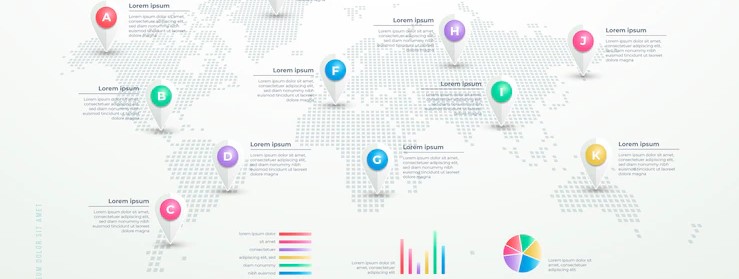What is Sales Territory Mapping used for?
Sales territory mapping is the comprehensive process of organizing sales territories to maximize sales productivity.
A sales team can use a well-designed map to identify new opportunities, better understand customers, and track performance overall.
This mapping type is essential for any sales team hoping to optimize their overall performance. It can be complex and time-consuming, making it challenging to keep up with the changing economic circumstances.
A specific boundary for each territory is often based on multiple factors, including population density, transportation routes, or customer concentration.
Creating an accurate and up-to-date map is critical for any business that uses geographic territories to drive sales.
Different Types of Sales Territories

Customer Territories: These territories are based on the organization’s customers. For instance, a company may hold specific regions for small and large businesses.
Product Territories: These areas are based on services or products that a company sells. For example, an organization may have specific territories for varying product lines.
Sales Channel Territories: These territories use the sales channels that a business operates. This sectioning may include separate regions for indirect and direct sales.
Industry Territories: These areas will focus territories on the company industries. A company may have differing territories for its pharmaceutical and homewares industries.
Why Does a Company Need Sales Territory Mapping?

As sales territory mapping is complex, keeping up with the varying economic conditions is often difficult. Technology may help the sales teams, improving efficiency and organization.
The software offers a platform to analyze sales data, create territories, and monitor customer data.
Investing in mapping software also enables several advantages over traditional techniques
1. More Flexibility
The mapping software allows the sales team greater flexibility in managing their territories. The traditional territory management methods constrict the team to pre-determined geographic boundaries, making optimizing it challenging.
With mapping software, sales teams can create custom territories based on several factors, including purchasing habits, competitor activity, and customer demographics.
2. Better Consumer Analysis
A business that relies on sales territories to generate revenue understands that territory must be well-defined.
This type of software provides a comprehensive and detailed analysis of consumer data, allowing organizations to identify key trends and optimize the territories accordingly.
Sales territory mapping also helps businesses track results over time, allowing fine-tuning of territories.
3. Improved Productivity Overall
As sales territory mapping software directly benefits sales organizations, it becomes crucial for increasing productivity.
By automating the process of sales territories, salespeople can spend more time selling products and less time working through administrative tasks.
Additionally, this software makes it easier to identify new customers and continue to track the progress of existing ones. The sales team can effectively target efforts and close more deals.
The First Steps in Developing a Sales Territory Plan

Knowing how to develop a plan efficiently is essential for driving sales. While creating a sales territory plan is complex, there are a few basic steps you can follow:
1. Define all goals
Defining your goals is the first step in building an efficient plan. Understand what you’re trying to achieve with your sales territories and how to increase the market share within a particular region.
Begin designing territories aligned with those goals. For example, to increase market share, create territories focusing on specific customer groups.
2. Understand Your Customers
Build the ideal customer for your product or service. Who are they? What motivates them? Answer questions about demographics and tailor your territories to match that customer base.
Whatever your customer base may be, understanding their motivations and needs before you can sell to them has to be the first step. Once you’ve built the profile, targeting the right individual is easier.
Additionals:






















